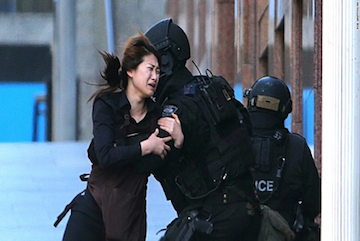In 2014, an FBI report found that an active shooter incident occurs on an average of once per month. More frightening still is the proportion that occurs at our places of work (45.6%) and schools (24.4%). According to the U.S. Bureau of Labor Statistics, 5% of all business will experience an active shooter or other violent incidents at the workplace. In organizations with 1,000 or more employees, the risk jumps to an alarming 50% probability of having an incident at the workplace. It’s no longer a question of “if an incident might occur;” instead, it’s a matter of how prepared are you for when it happens?
What are the ABC’s of an Active Shooter Incident?
How your facility responds in the first 2-5 minutes is key to minimizing the damage that an active shooter can cause; having a plan that emphasizes the ABC’s is critical. Knowing the ABC’s of an active shooter situation will dramatically help minimize the effects of an incident. The ABC’s are simply a shorthand way to remember the three key components of an active shooter preparedness plan – Avoidance, Barricade, Confront.
Preparing for the worst
Speaking with our Active Shooter and Medical Emergency Preparedness (ASMEP) Instructor, Leo DePablos, the ABC’s are a vital portion of the training we offer. DePablos stresses that while every building’s needs are unique, there are some vital steps and facts that every Emergency Action Plan Director (EAP) and Fire Safety Director (FSD) should be aware of. For starters, personnel should be trained on how to properly execute the building’s safety training plan – knowing how to communicate and direct the occupants on how to avoid danger, where to secure in place (barricade), and knowing when and how to confront an attacker.
Every building safety plan should make clear to all occupants the procedures for alerting of an incident. An FSD/EAP should stress to the occupants of their building to not pull the fire alarm in an active shooter situation. Instead, they should alert their FSD/EAP at the building’s fire command center, whose responsibility it is to get the proper emergency service personnel on the scene. EAP’s should also communicate the expected response from first responders to their building’s occupants. This will greatly vary by building but knowing what to expect ahead of time will eliminate confusion and save lives.
Related Courses: Active Shooter & Medical Emergency Preparedness Training
New York City was the first municipality in the country to require ASMEP training in all high-rise and office buildings and continues to roll out enforcement. One upcoming change requires current F-58 Certificate of Fitness (CoF) holders to complete ASMEP training by 9/4/2017. Though no one ever wants to find themselves involved in a violent incident at the workplace, knowing the steps to take in an event saves lives. That’s why it’s always important to remember your ABC’s.

